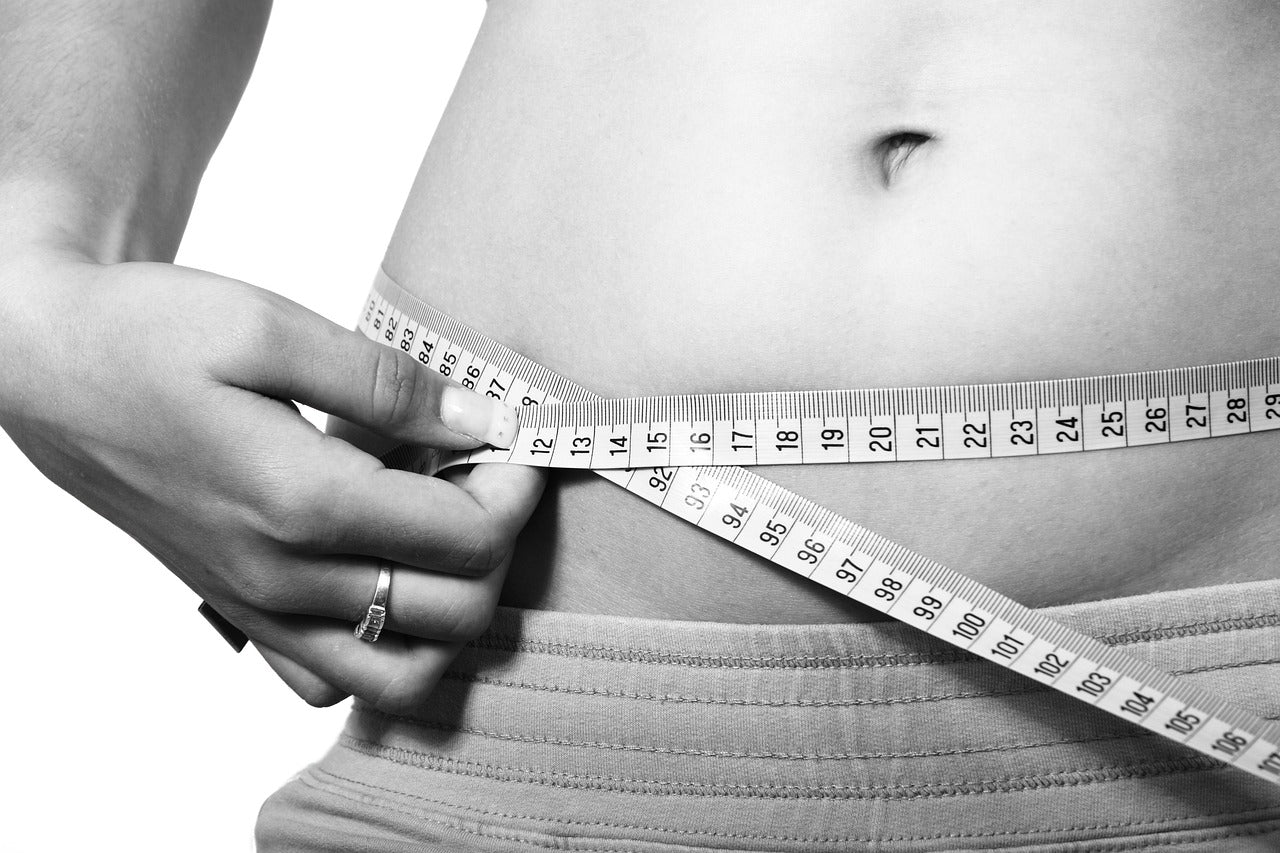Macronutrient breakdown may be the key to achieving your weight loss goals effectively and sustainably.
In this article, you will also learn how to integrate this breakdown into your daily diet, creating a personalized meal plan that will help you achieve and maintain your desired results.
So, get ready to delve deeper into macronutrients and discover how to make them work to your advantage to reach your weight loss goal.
If you want to better understand how to do macronutrient splitting for weight loss, take a DNA test.
What are macronutrients and why are they important?
To fully understand the concept of macronutrient breakdown for weight loss, it is essential to have a solid understanding of what macronutrients are and why they are important for our bodies.
Macronutrients are the essential nutrients that our body needs in large quantities to perform its vital functions. They include carbohydrates, proteins, and fats. Each of these macronutrients plays a specific role in our body and provides energy in different forms.
Carbohydrates are the main source of energy for our body. They are mainly found in foods such as cereals, bread, rice, pasta, fruits and vegetables. Carbohydrates can be divided into simple carbohydrates, such as sugar, and complex carbohydrates, such as those found in whole grains.
Protein is essential for building and maintaining tissues , such as muscles, bones, skin, and organs. Protein sources include meat, fish, eggs, dairy products, legumes, and nuts. Protein is made up of amino acids, which are the basic building blocks of proteins in our bodies.
Fats are a concentrated source of energy and play a vital role in brain function , absorption of fat-soluble vitamins, and hormone production. Fats can be divided into saturated, unsaturated, and trans fats. Sources of fat include olive oil, nuts, seeds, butter, cheese, meat, and fish.
Each macronutrient has a specific caloric value: carbohydrates and proteins provide 4 calories per gram, while fats provide 9 calories per gram.
How to Calculate Macronutrient Breakdown
Now that you have a solid understanding of macronutrients and their importance, it's time to learn how to calculate your macronutrient breakdown for your weight loss goal.
This process will help you determine how much carbohydrates, protein, and fat you should consume daily to reach your goals.
If you want to better understand how to do macronutrient splitting for weight loss, take a DNA test .
Why You Need to Calculate Your Macronutrient Breakdown
Calculating your macronutrient breakdown is essential for several reasons. First, it gives you a clear overview of how much of each nutrient you’re consuming and whether it’s in line with your weight loss goals.
It also helps you set a baseline to monitor your progress and make adjustments over time. Additionally, a balanced macronutrient breakdown can help you optimize energy, performance, and body composition.
Tools Needed to Calculate the Distribution
Before you begin the calculation process, make sure you have some tools that will make your task easier. Here's what you'll need:
-
Calculator or smartphone with calculator: You will need this to perform the calculations needed to determine your macronutrient breakdown.
-
Food scale: Useful for weighing food and getting accurate portion measurements.
-
Food Nutrition Facts: These tables show the nutritional information of foods, including the amounts of carbohydrates, protein, and fat in a specific serving.
-
Calorie Counting Apps or Software: There are several apps and software available that allow you to track the calories and macronutrients you consume throughout the day.
The Calculation Process
To calculate your macronutrient breakdown, follow these steps:
-
Set your calorie goal: Determine how many calories you want to consume per day to reach your weight loss goal. This can vary depending on your metabolism, activity level, and individual needs.
-
Determine the percentage of calories from carbohydrates: A good starting point is to allocate 40-50% of your total calories to carbohydrates. For example, if your daily calorie goal is 1500 calories, that means you should consume 600-750 calories from carbohydrates.
-
Calculate the amount of carbohydrates in grams: Since carbohydrates provide 4 calories per gram, you can divide the total number of calories from carbohydrates by 4 to get the amount of carbohydrates in grams. For example, if you want to consume 600-750 calories from carbohydrates, you should consume about 150-187.5 grams of carbohydrates per day.
-
Determine the percentage of calories from protein: Allocate 25-35% of your total calories to protein. Using the same example of a calorie goal of 1500 calories per day, this means you should consume 375-525 calories from protein.
-
Calculate the amount of protein in grams: Since protein provides 4 calories per gram, you can divide the total number of calories from protein by 4 to get the amount of protein in grams. For example, if you want to consume 375-525 calories from protein, you should consume about 94-131 grams of protein per day.
-
Determine the percentage of calories from fat: Allocate 20-30% of your total calories to fat. Using the same example of a calorie goal of 1500 calories per day, this means you should consume 300-450 calories from fat.
-
Calculate the amount of fat in grams: Since fat provides 9 calories per gram, you can divide the total number of calories from fat by 9 to get the amount of fat in grams. For example, if you want to consume 300-450 calories from fat, you should consume about 33-50 grams of fat per day.
How to Fix Your Macronutrient Split to Aid Weight Loss
Once you have calculated your macronutrient breakdown based on your calorie goal, you may need to make any adjustments to facilitate effective weight loss.
This section will walk you through the signs that indicate you need to adjust your macronutrient split, the different tools available to make these changes, and the proper techniques for doing so.
Signs That Indicate the Need to Fix Your Macronutrient Breakdown to Lose Weight
There are several signs that may indicate the need to adjust your macronutrient balance to facilitate weight loss. Some of these signs include:
-
Weight Loss Stall: If you’ve hit a plateau and your weight loss has stalled despite sticking to your eating plan, it may be time to reconsider your macronutrient breakdown.
-
Constant feeling of hunger: If you feel constantly hungry despite following your eating plan, it could be a sign that your macronutrient breakdown is not optimally balanced.
-
Low Energy Levels: If you feel fatigued, weak, or lacking energy throughout the day, it may be time to look at your macronutrient breakdown and make any necessary adjustments.
-
Difficulty maintaining your meal plan: If you find yourself constantly struggling to stick to your meal plan due to cravings or excessive deprivation, you may need to adjust your macronutrient breakdown to make your plan more sustainable long-term.
Once you have identified the need to make changes to your macronutrient breakdown, it is important to do so correctly. Here are some techniques you can use:
-
Gradual Changes: Make changes to your macronutrient breakdown gradually. Drastic changes to your diet can be difficult to maintain and can negatively impact your metabolism. Start with small changes and monitor your results carefully.
-
Log and track: Keep a food journal or use an app to track your meals and the nutrients you consume. This will help you identify your strengths and areas where you may need to make further changes.
-
Monitor Results: Once you make changes, monitor your results closely. Take note of how you feel, your energy levels, your weight loss, and your physical performance. This will allow you to evaluate whether the changes you made to your macronutrient breakdown are working for you.
-
Consult a professional: If you are having trouble adjusting your macronutrient split on your own or need personalized guidance, don’t hesitate to consult a nutritionist or dietitian. They can provide you with the right strategies and advice based on your individual needs.
and your nutrition information in a safe place. This will allow you to refer to this information when needed and track it over time. Some ways to store information include:
-
Keep a food diary or electronic file: Record the details of your diet, including carbohydrates, protein, and fat, in a food diary or electronic file. You can also include notes about your progress, how you feel, and any changes you make.
-
Use calorie counting apps or software: Calorie counting apps and software can help you track your diet information. Make sure you use a reliable platform and export your data regularly to avoid data loss.
Handle Information with Care and Use It Correctly
Finally, to maintain macronutrient distribution, it is essential to handle the information carefully and use it correctly. Here are some helpful tips:
-
Educate yourself on carbohydrate, protein, and fat sources: Learn to recognize the different sources of carbohydrates, proteins, and fats and understand their amounts and their effects on your body. This will help you select nutritious foods that fit your macronutrient breakdown.
-
Be aware of food labels: Read food labels carefully to identify the amounts of carbohydrates, proteins, and fats in packaged foods. This will help you make more informed food choices and avoid potential slip-ups in your allocation.
-
Consult a Professional: If you have any concerns or need personalized guidance on maintaining your macronutrient balance, don’t hesitate to consult a nutritionist or dietitian. They can provide specific advice based on your individual needs.
Create a Macronutrient Split Meal Plan to Lose Weight
To integrate the macronutrient breakdown into your daily diet, it is helpful to create a meal plan that respects the amounts of carbohydrates, proteins and fats determined in the calculation. Here are some tips for creating an effective meal plan:
-
Identify sources of carbohydrates, proteins and fats: Make a list of sources of carbohydrates, proteins and fats that you prefer or that are suitable for your diet. This can include foods such as whole grains, lean meats, fish, legumes, vegetables, fruits, dairy products, nuts and seeds.
-
Make a weekly meal plan : Plan your meals for the entire week, taking into account the amounts of carbs, protein, and fat you want to consume. Be sure to include a variety of foods to ensure you get all the nutrients you need.
-
Balance your meals: Make sure each meal contains a combination of carbohydrates, proteins, and fats in the right proportions. For example, you might include a serving of whole grains or vegetables as a source of carbohydrates, a serving of meat or fish as a source of protein, and a serving of olive oil or avocado as a source of healthy fats.
-
Stock up on nutritious foods: Make sure you have nutritious foods that meet your macronutrient breakdown. Shop consciously, choosing fresh, high-quality foods that meet your nutritional needs.
If you want to better understand how to do macronutrient distribution for weight loss, take a DNA test . This will help you understand how your body reacts to the way you consume food.




Leave a comment
This site is protected by hCaptcha and the hCaptcha Privacy Policy and Terms of Service apply.